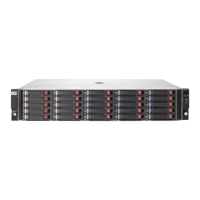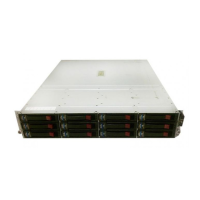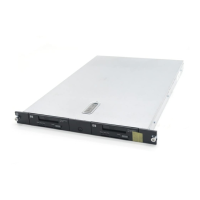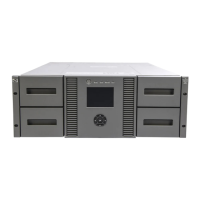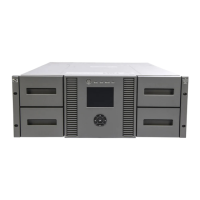• B-series Meta SAN—Implemented in certain 8 Gb/s switch models with license enabled integrated
Fibre Channel routing or using the B-series 1606 Extension SAN Switch, DC Dir Switch MP Exten-
sion Blade, 400 Multi-protocol Router (400 MP Router), Multi-protocol Router Blade (MP Router
Blade), or Multi-protocol Router (MP Router), which provide selective Fibre Channel routing con-
nectivity between multiple B-series fabrics or between B-series and M-series fabrics.
• B-series Virtual Fabrics with IFR—Implemented in B-series switches (DC SAN Backbone Director,
DC04 Director, 8/80 SAN Switch, and 8/40 SAN Switch) using B-series Virtual Fabrics. IFR allows
you to share devices across multiple B-series Virtual Fabrics partions.
• C-series VSANs with IVR—Implemented using C-series IVR. IVR provides selective Fibre Channel
routing connectivity between devices in different VSANs. Ports on one or more switches can be
assigned to different VSANs.
• H-series switches with TR—Implemented using the TR feature, which is available with firmware 8.x
(or later). The TR feature provides inter-fabric routing, allowing controlled access between devices
on an SN6000 Fibre Channel Switch or an 8/20q Fibre Channel Switch (local) fabric and devices
on a remote fabric consisting of B-series or C-series switches.
B-series Meta SAN
A Meta SAN contains multiple B-series fabrics connected together using the B-series 8 Gb/s switches
with Fibre Channel routing, 1606 Extension SAN Switches, DC Director Switch MP Extension Blades,
or MP Routers. The 8 Gb/s switches with Fibre Channel routing, 1606 Extension SAN Switches, DC
Dir Switch MP Extension Blades, or MP Routers implement the Fibre Channel routing service, which
allows selective access between devices in different fabrics without having to merge fabrics. This
provides a high level of isolation between fabrics. This isolation can be viewed as individual Fibre
Channel subnetworks within the Meta SAN.
LSANs provide access to devices in different fabrics. You create LSAN zones just as you create
standard zones in a single fabric. The difference is that LSAN zone definitions span multiple fabrics
and therefore must be replicated on all fabrics that comprise the LSAN.
For more information about Meta SANs and Fibre Channel routing, see
“Fibre Channel routing” on page 61.
B-series Virtual Fabrics architecture
In B-series configurations, a switched fabric is partitioned into several logical switches and logical
fabrics (Figure 17) by using the Virtual Fabrics feature. To accomplish this, the Virtual Fabrics feature
must be enabled. The Virtual Fabrics feature is set to OFF by default. Enabling Virtual Fabrics is a
disruptive operation, which requires a reboot. Devices can be shared across multiple logical fabrics
using IFR, increasing resource sharing. B-series Virtual Fabrics and Virtual Fabrics with IFR are included
on B-series switch models: DC SAN Backbone Director, DC04 Director, 8/80 SAN Switch and 8/40
SAN Switch only.
B-series fabric partitioning with administrative domains
In B-series configurations, a switched fabric is partitioned into several management domains using
the Administrative Domains feature. An administrative domain is only a filtered administrative view
of the fabric. Each administrative domain has its own set of resources, such as: administrator and
users, Name Server, and zoning database. Resources can be shared across multiple administrative
domains by properly defining their membership. The Administrative Domains feature is available on
all switches using firmware 5.2x (or later).
SAN Design Reference Guide 49

